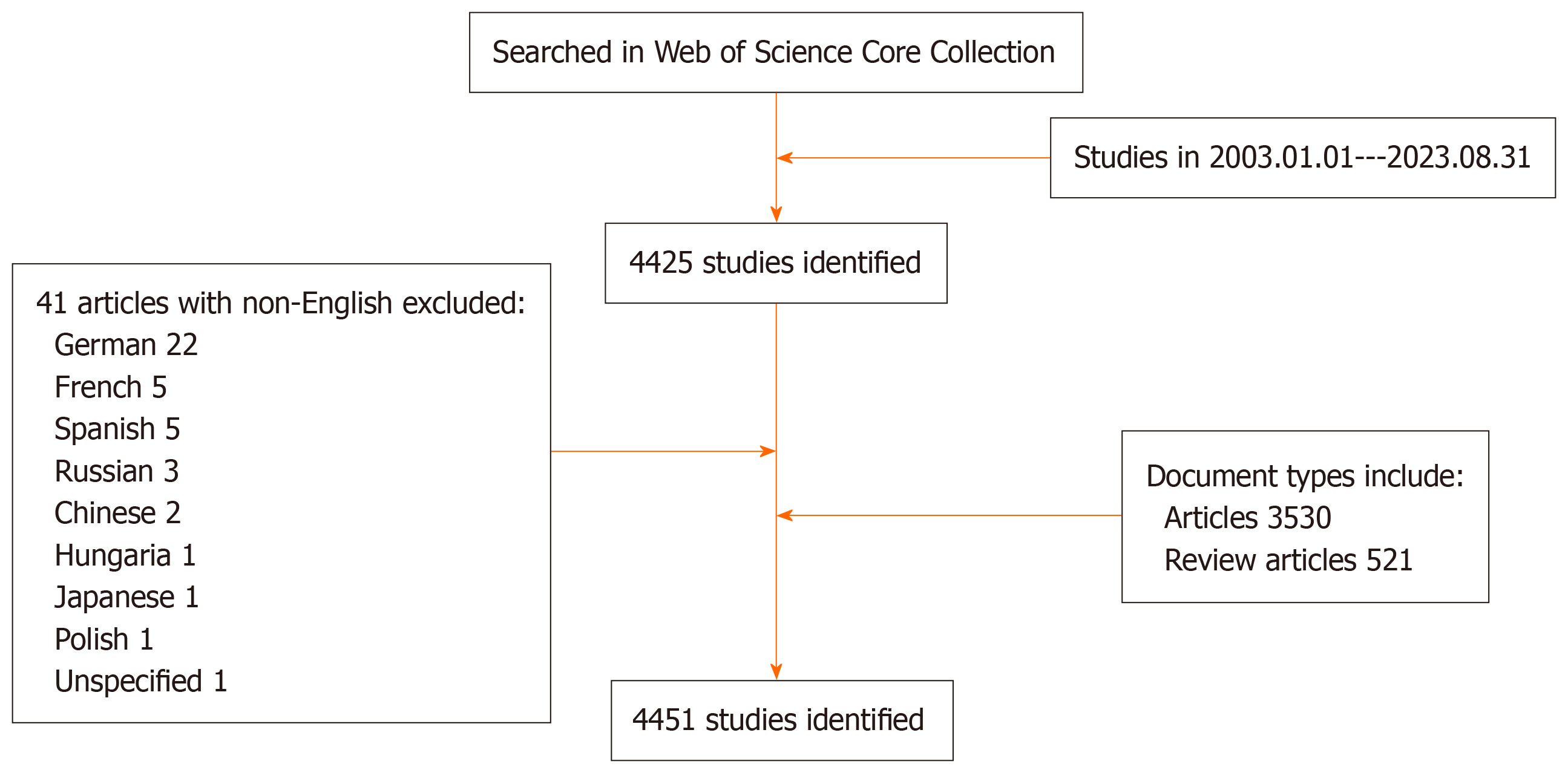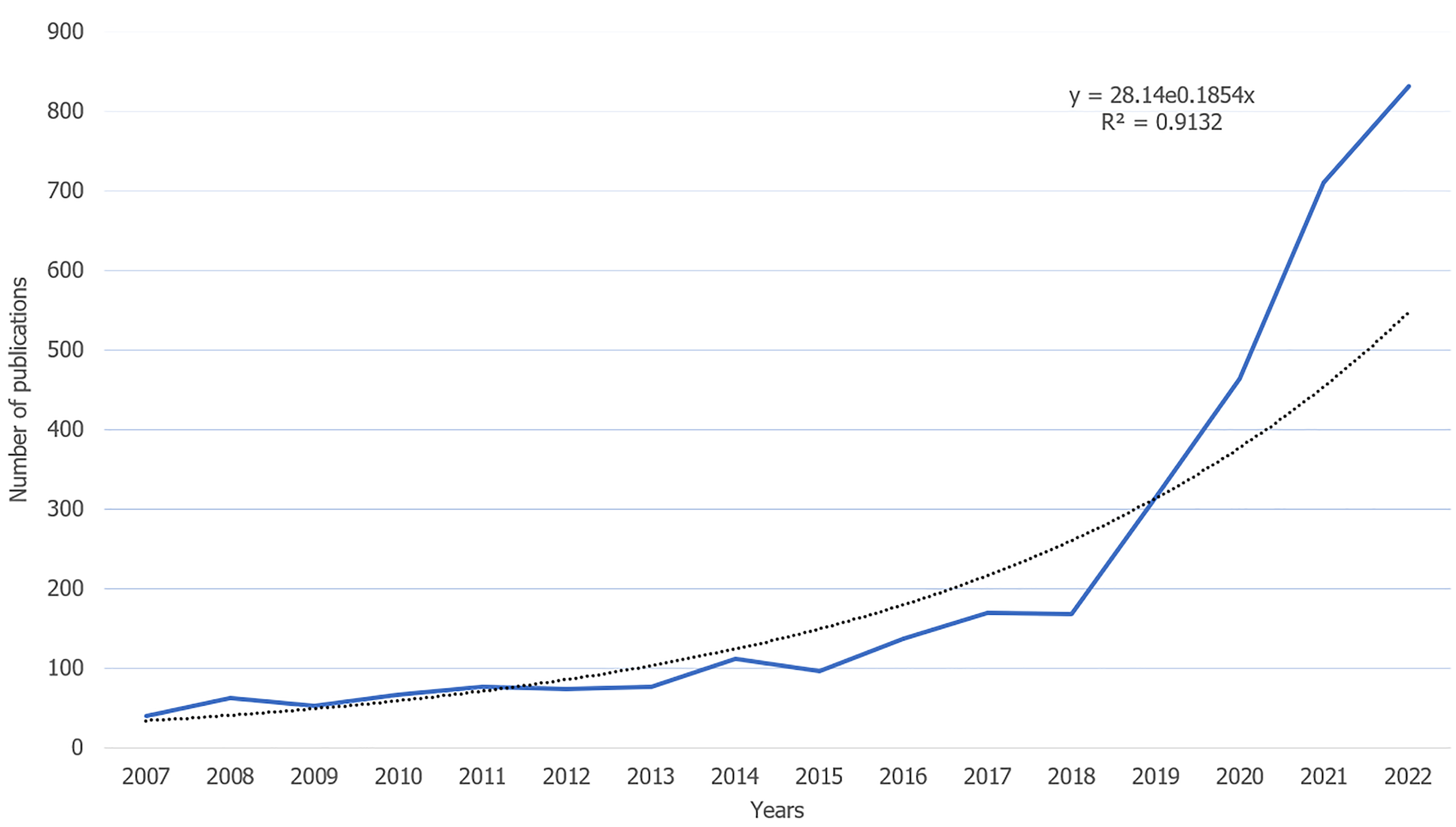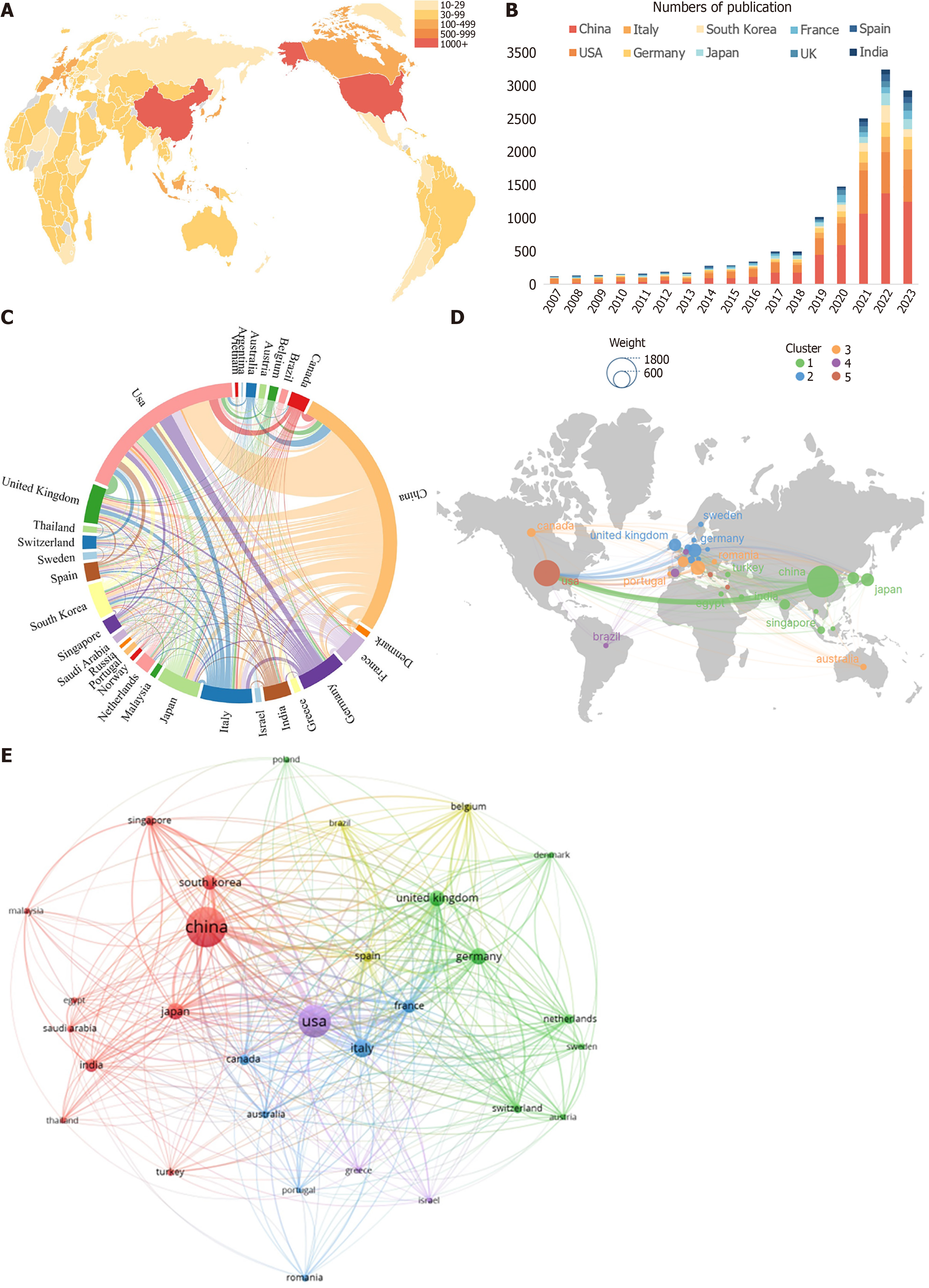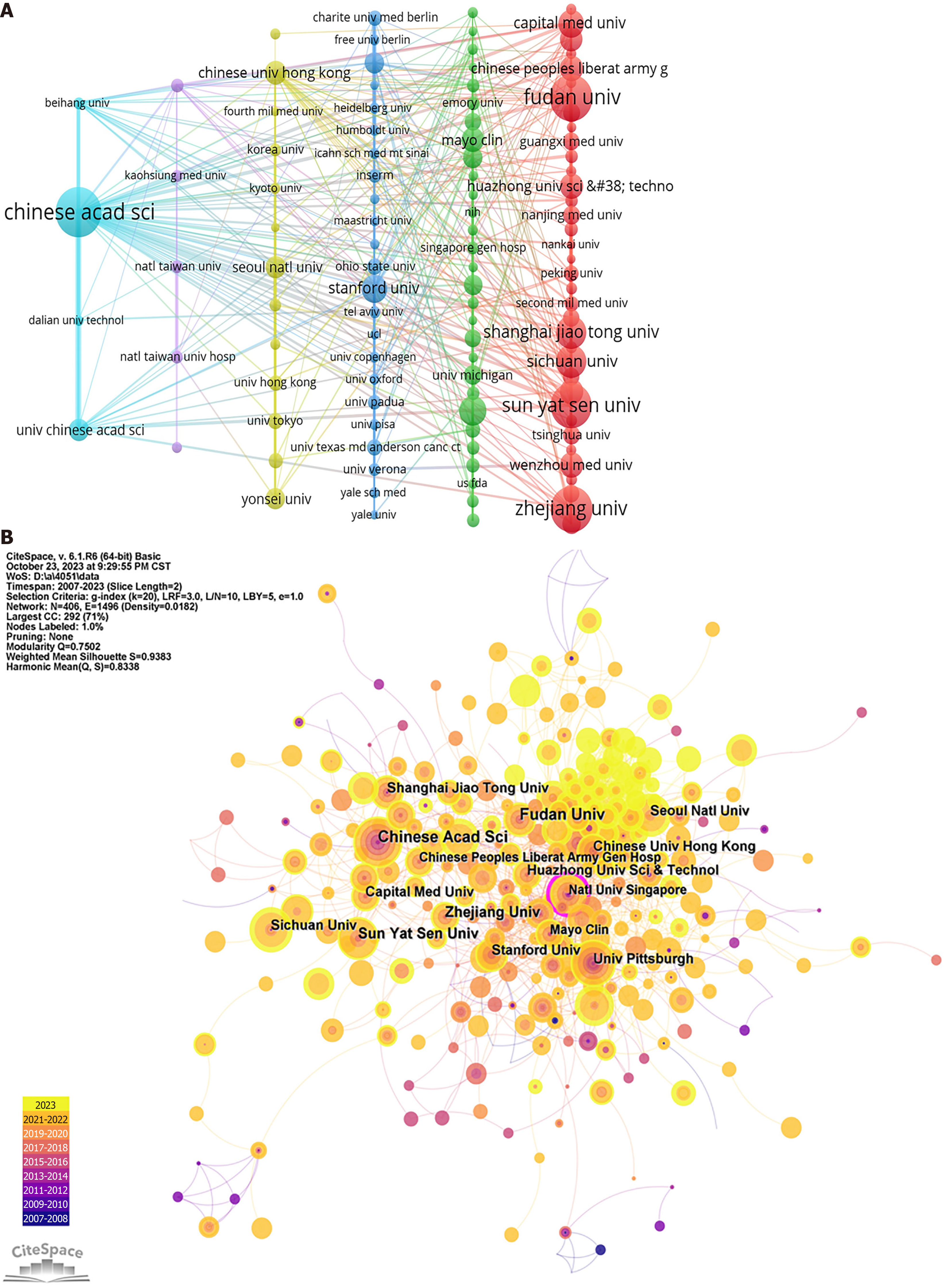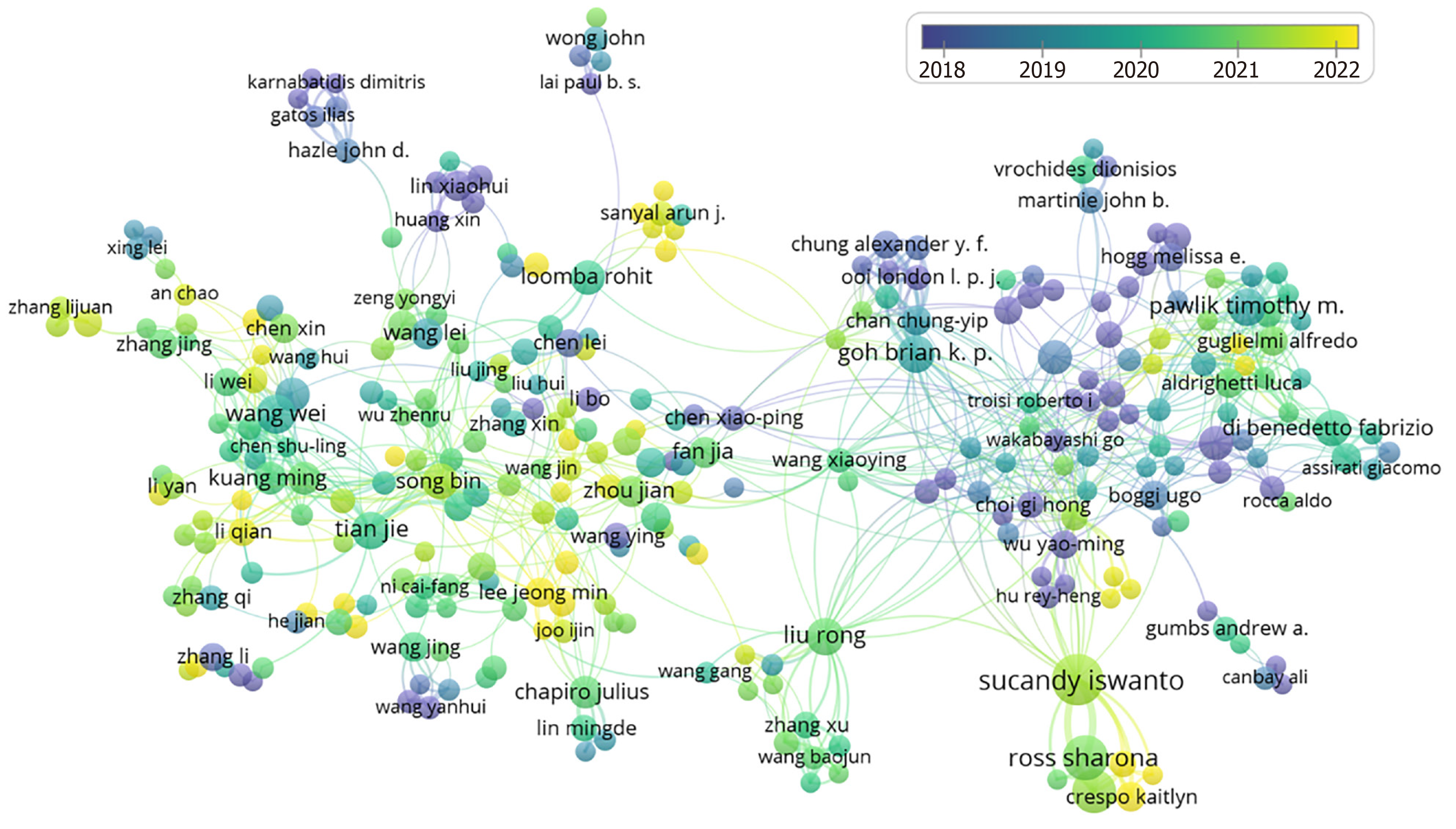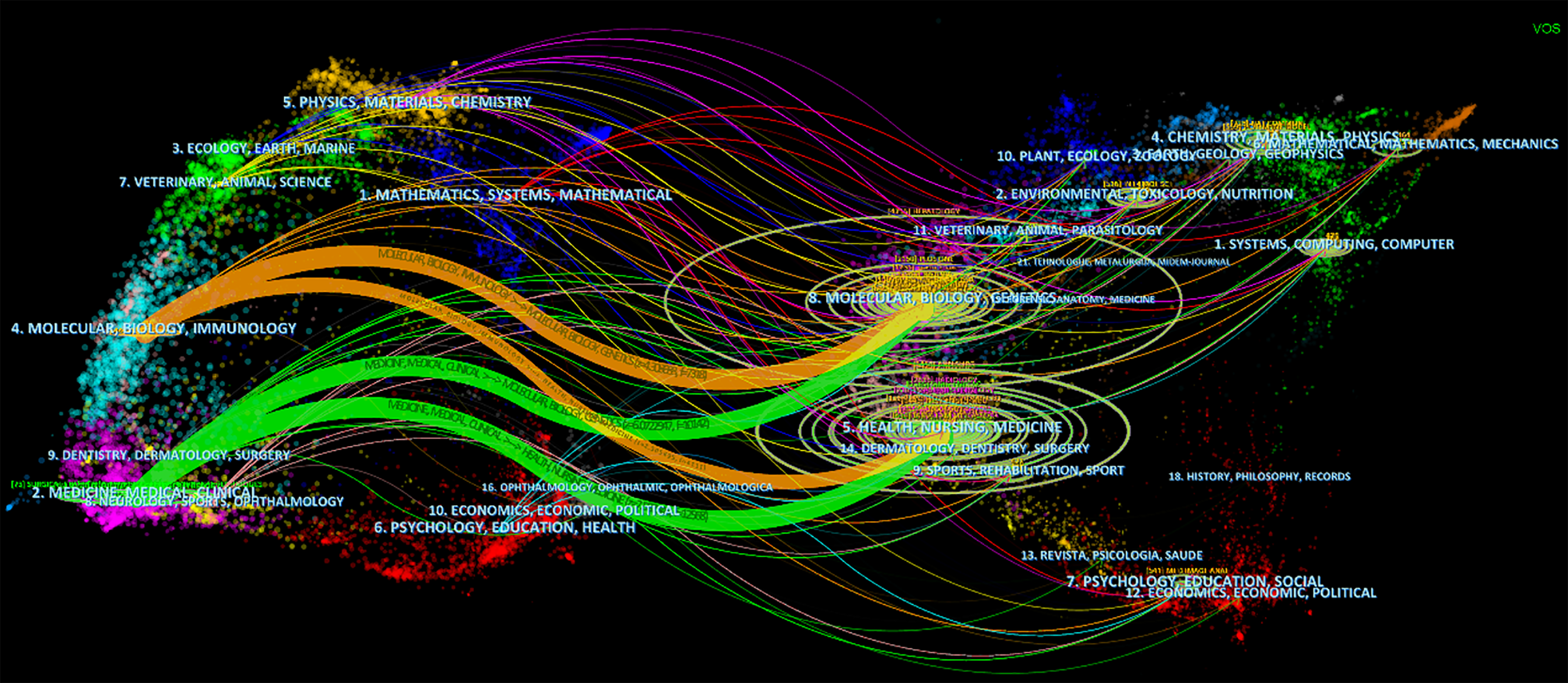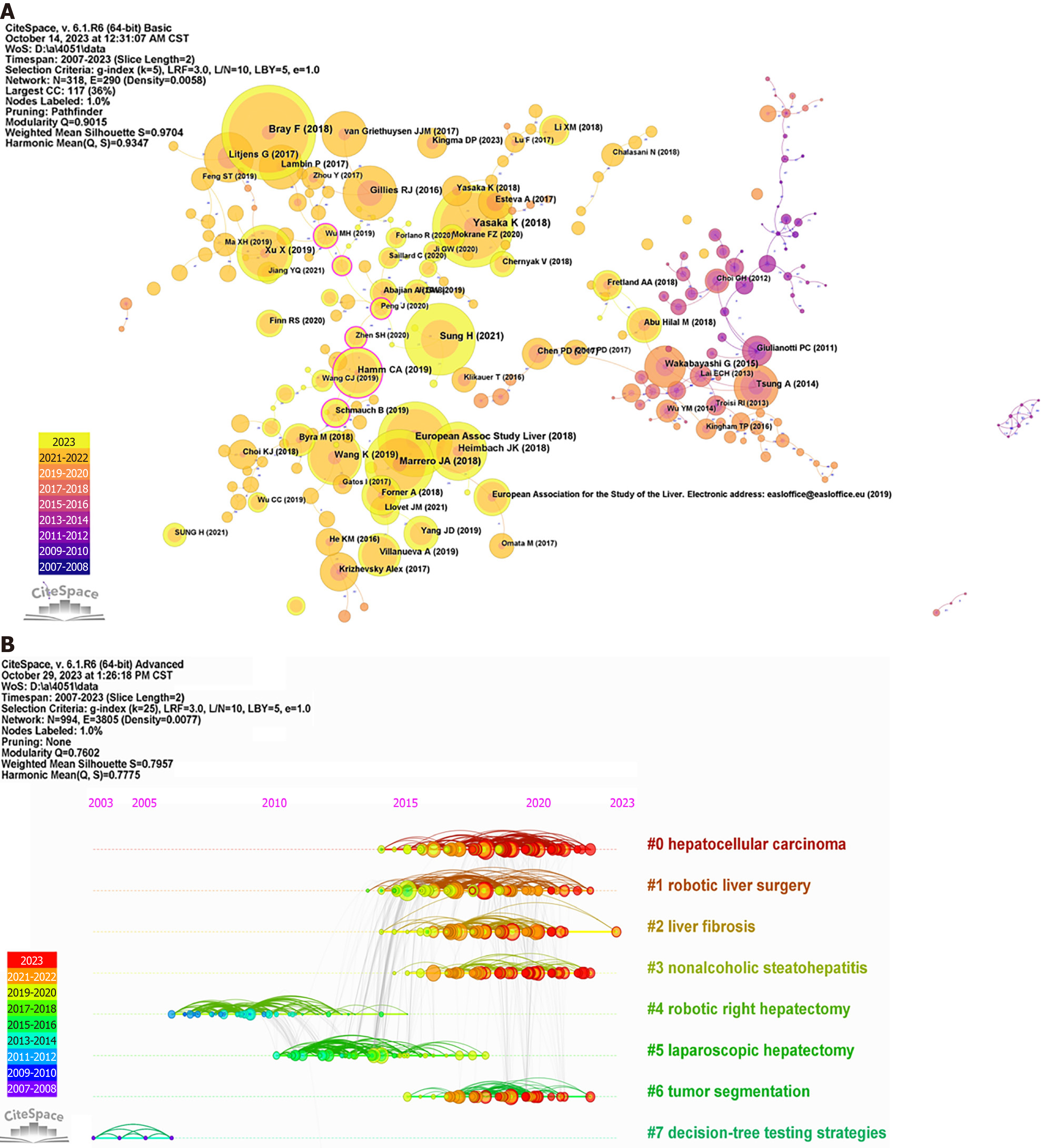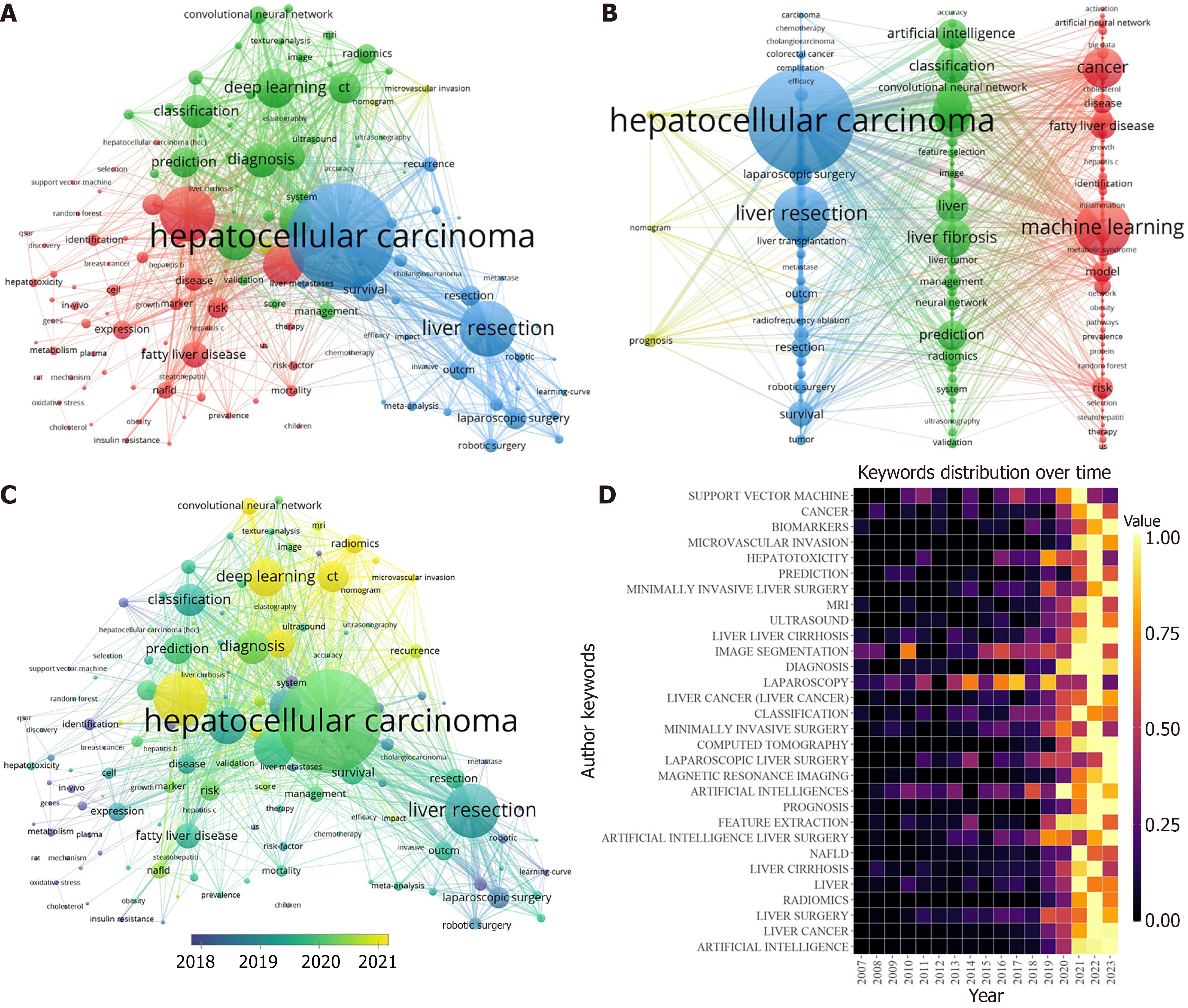Copyright
©The Author(s) 2025.
World J Hepatol. Mar 27, 2025; 17(3): 101721
Published online Mar 27, 2025. doi: 10.4254/wjh.v17.i3.101721
Published online Mar 27, 2025. doi: 10.4254/wjh.v17.i3.101721
Figure 1 Flowchart of study selection from the Web of Science Core Collection.
Figure 2 The number of publications on artificial intelligence research in liver disease per year from 2007-2023.
The graph illustrates the exponential growth of publications from 2007-2023.
Figure 3 Visualization of publications and cooperation between countries.
A: A world map color-coded by the number of publications per country; B: A bar graph showing the number of publications from the top 10 most productive countries from 2007-2023; C-E: The map of international cooperation has been produced via a website (https://charticulator.com), Scimago Graphica, and VOSviewer.
Figure 4 Network visualization of institutions involved in artificial intelligence research on liver disease.
A: Produced by VOSviewer; B: Produced by CiteSpace.
Figure 5 Visualization map of the coauthorship analysis of authors carried out on VOSviewer.
Figure 6 A dual-map overlap of journals on artificial intelligence research in liver disease was carried out via CiteSpace.
Figure 7 CiteSpace visualization map of cocited references.
A: Cluster view; B: Timeline view.
Figure 8 Visualization analysis of keyword co-occurrence.
A and B: Keyword co-occurrence and clustering via VOSviewer; C: Overlay visualization of keywords; D: Heatmap of annual keyword frequency.
- Citation: Zhou XQ, Huang S, Shi XM, Liu S, Zhang W, Shi L, Lv MH, Tang XW. Global trends in artificial intelligence applications in liver disease over seventeen years. World J Hepatol 2025; 17(3): 101721
- URL: https://www.wjgnet.com/1948-5182/full/v17/i3/101721.htm
- DOI: https://dx.doi.org/10.4254/wjh.v17.i3.101721









